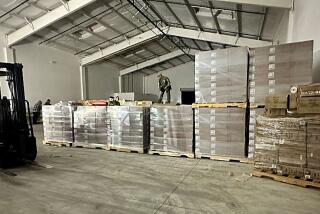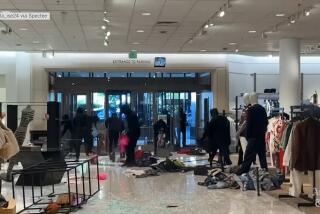RTD Tightens Controls on Parts Inventory After Inquiry
- Share via
Tighter controls are being imposed on RTD’s huge bus parts inventory after an investigation of a phantom warehouse where $1.2 million in missing bus parts were “stored,” officials said Thursday.
After a three-week review of the phantom, or dummy, warehouse, as some transit employees called it, top Southern California Rapid Transit District managers claimed that about $425,000 of the misplaced parts never actually existed and were computer entry errors. Another $257,000 in missing parts were found.
About $575,000 worth of parts remains unaccounted for, including $384,000 not yet investigated and $191,000 in parts that could not be located and have been written off the RTD books.
The investigation was ordered after The Times reported that while other transit agencies routinely write off missing parts, the RTD had created a paper-only stock location in its computers that was indistinguishable from real stocking locations. The account caused confusion among warehouse employees, who claimed that it was an attempt to cover up mismanagement--a charge strongly denied by top RTD officials.
Created in Computers
The non-existent warehouse--called SD14--was put into RTD computers in June, 1986, by managers who were struggling with a series of inventory accounting problems. Among the problems was the refusal of the district’s computers to automatically reorder badly needed bus parts that were listed in the main inventory but could not be found in the warehouse.
Less than a year after the new bookkeeping scheme was initiated, the unaccounted-for items had risen from none to the equivalent of about 6% of the RTD’s $22-million worth of bus parts and office supplies on hand.
Although theft of parts has been a problem in the past--and RTD police are currently investigating one parts stealing case--none of the $191,000 written off as a loss was specifically attributed to pilferage. “Some of that could possibly include theft,” said James Connolly, the district’s chief warehouse manager.
RTD managers, including General Manager John Dyer, have insisted that the accounting change was not a deception and deny that it amounted to a phantom warehouse. RTD officials said they created the non-existent storage location in their computers to allow detailed investigation of why parts were missing. However, they acknowledged that the account grew because little effort was made to investigate missing parts.
‘Suspense Account’
After the Times report, Dyer and other RTD officials began referring to the non-existent warehouse as a “suspense account.” Dyer said that a report he commissioned from the district’s outside auditors vindicated district managers. The auditors expressed no specific opinion on the RTD account, but said a temporary holding account for missing items is a prudent business practice when there is “timely investigation and follow-up.”
Among the new inventory controls, officials said, will be restrictions permitting only management officials to shift inventory to the “suspense account,” which will be given a new designation that distinguishes it from real warehouses. In addition, investigations of missing parts will be stepped up to ensure that the unaccounted-for inventory never exceeds 2% of the district total.
More to Read
Sign up for Essential California
The most important California stories and recommendations in your inbox every morning.
You may occasionally receive promotional content from the Los Angeles Times.










